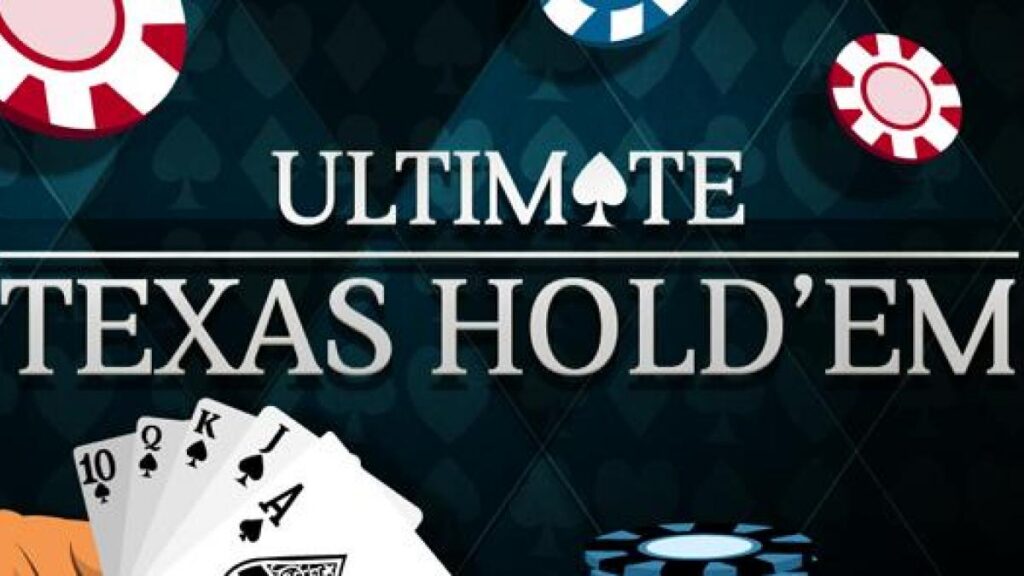
Explore the Ultimate Hold’em 홀덤사이트 Guide, designed for novices and seasoned players alike. Embark on a journey through every facet of Texas Hold’em poker, unraveling its rules, strategies, and invaluable tips to elevate your gameplay and boost your odds of success. This comprehensive guide is crafted to furnish you with a profound comprehension of Texas Hold’em, spanning from foundational principles to sophisticated tactics.
Table of Contents
- Introduction to Texas Hold’em
- Basic Rules of Texas Hold’em
- Hand Rankings
- Betting Rounds
- Strategies for Beginners
- Advanced Strategies
- Reading Your Opponents
- Bluffing Techniques
- Common Mistakes to Avoid
- Glossary of Poker Terms
- Conclusion
Introduction to Texas Hold’em
Texas Hold’em stands out as the globally favored poker variant, blending skill, strategy, and psychology. The aim is to craft the strongest five-card hand by cleverly combining two concealed cards (hole cards) with five shared community cards.
Basic Rules of Texas Hold’em
The Setup
Texas Hold’em is typically played with 2 to 10 players. The game uses a standard 52-card deck. Here are the basic steps:
- Blinds: The game begins with two players posting the small blind and the big blind.
- Dealing: Each player receives two private cards (hole cards).
- Betting Rounds: There are four betting rounds: Pre-flop, Flop, Turn, and River.
- Showdown: After the final betting round, players reveal their cards, and the best hand wins the pot.
The Blinds
The small blind and big blind are forced bets that initiate the action. The player to the left of the dealer posts the small blind, and the player to their left posts the big blind. The amount of the blinds varies depending on the game stakes.
The Deal
Each player receives two hole cards dealt face down. These cards are unique to each player and should be kept hidden from opponents.
Hand Rankings
Understanding hand rankings is crucial in Texas Hold’em. Here are the hands from highest to lowest:
- Royal Flush: A, K, Q, J, 10, all of the same suit.
- Straight Flush: Five consecutive cards of the same suit.
- Four of a Kind: Four cards of the same rank.
- Full House: Three of a kind plus a pair.
- Flush: Any five cards of the same suit.
- Straight: Five consecutive cards of different suits.
- Three of a Kind: Three cards of the same rank.
- Two Pair: Two different pairs.
- One Pair: Two cards of the same rank.
- High Card: The highest card in your hand if no other hand is made.
Betting Rounds
Pre-flop
After receiving their hole cards, players decide whether to call, raise, or fold based on the strength of their cards. The action starts with the player to the left of the big blind.
Flop
Three community cards are revealed on the table, with a subsequent round of betting commencing, beginning from the player situated to the left of the dealer.
Turn
A fourth communal card is revealed, igniting another round of betting following the same rules as the previous ones.
River
The fifth and final community card is dealt face up. This is followed by the last round of betting.
Showdown
If more than one player remains after the final betting round, a showdown occurs. Players reveal their hole cards, and the best five-card hand wins the pot.
Strategies for Beginners
Starting Hands
Knowing which starting hands to play is vital. Strong starting hands include pairs (especially high pairs like Aces and Kings), high-suited connectors (e.g., Ace-King of hearts), and high unsuited connectors (e.g., Ace-King).
Position
Your position at the table affects your strategy. Players who act later in the betting rounds have more information and can make better decisions. Early positions should play more conservatively, while late positions can afford to be more aggressive.
Betting Basics
Beginners should understand the basics of betting, including when to call, raise, or fold. Overbetting and underbetting can both be costly mistakes.
Advanced Strategies
Pot Odds and Implied Odds
Pot odds are the ratio of the current size of the pot to the cost of a contemplated call. Implied odds consider the potential future winnings if you complete your draw.
Bluffing
Bluffing constitutes a cornerstone of advanced strategy. Mastering successful bluffing demands a profound grasp of your opponent’s inclinations and the prevailing game context.
Reading the Board
Advanced players should pay close attention to the community cards and how they interact with potential hands. This helps in predicting opponents’ possible hands and making informed decisions.
Reading Your Opponents
Physical Tells
During live games, players have the opportunity to gather valuable insights from opponents through physical cues like facial expressions, body language, and betting patterns. This information can be crucial for making strategic decisions while playing.
Online Tells
In online games, players must rely on betting patterns and timing to read opponents. Observing how quickly an opponent makes a decision can provide valuable insights.
Bluffing Techniques
Semi-Bluff
A semi-bluff is a bet or raise with a drawing hand that has the potential to improve to the best hand. This technique adds an extra layer of deception to your game.
Pure Bluff
A pure bluff is a bet or raise with a weak hand, intending to make your opponents fold better hands. This is riskier but can be very rewarding if executed correctly.
Common Mistakes to Avoid
Playing Too Many Hands
Novice players often make the mistake of playing too many hands. Focus on playing strong starting hands and folding weaker ones.
Chasing Losses
Chasing losses by making desperate bets can quickly deplete your chip stack. Stay disciplined and stick to your strategy.
Ignoring Position
Disregarding the significance of positioning can result in expensive errors. Before taking action, carefully evaluate your position.
Glossary of Poker Terms
- Ante: A small bet all players must make before a hand begins.
- Big Blind: A forced bet made by the player two seats to the left of the dealer.
- Bluff: Betting or raising with a weak hand to induce folds.
- Call: Matching the current bet.
- Check: Passing the action to the next player without betting.
- Community Cards: Cards dealt face up in the center of the table, shared by all players.
- Fold: Discarding your hand and forfeiting the current pot.
- Pot: The total amount of bets made in a hand.
- Raise: Increasing the current bet.
- Small Blind: A forced bet made by the player to the left of the dealer.
Conclusion
Becoming a Texas Hold’em expert requires dedication, practice, and a profound grasp of the game’s nuances. By mastering the rules, comprehending hand rankings, and implementing successful tactics, you can enhance your abilities and boost your winning prospects. Maintain discipline, persistently analyze the game, and aim to outwit your rivals. Best of luck in your games!


